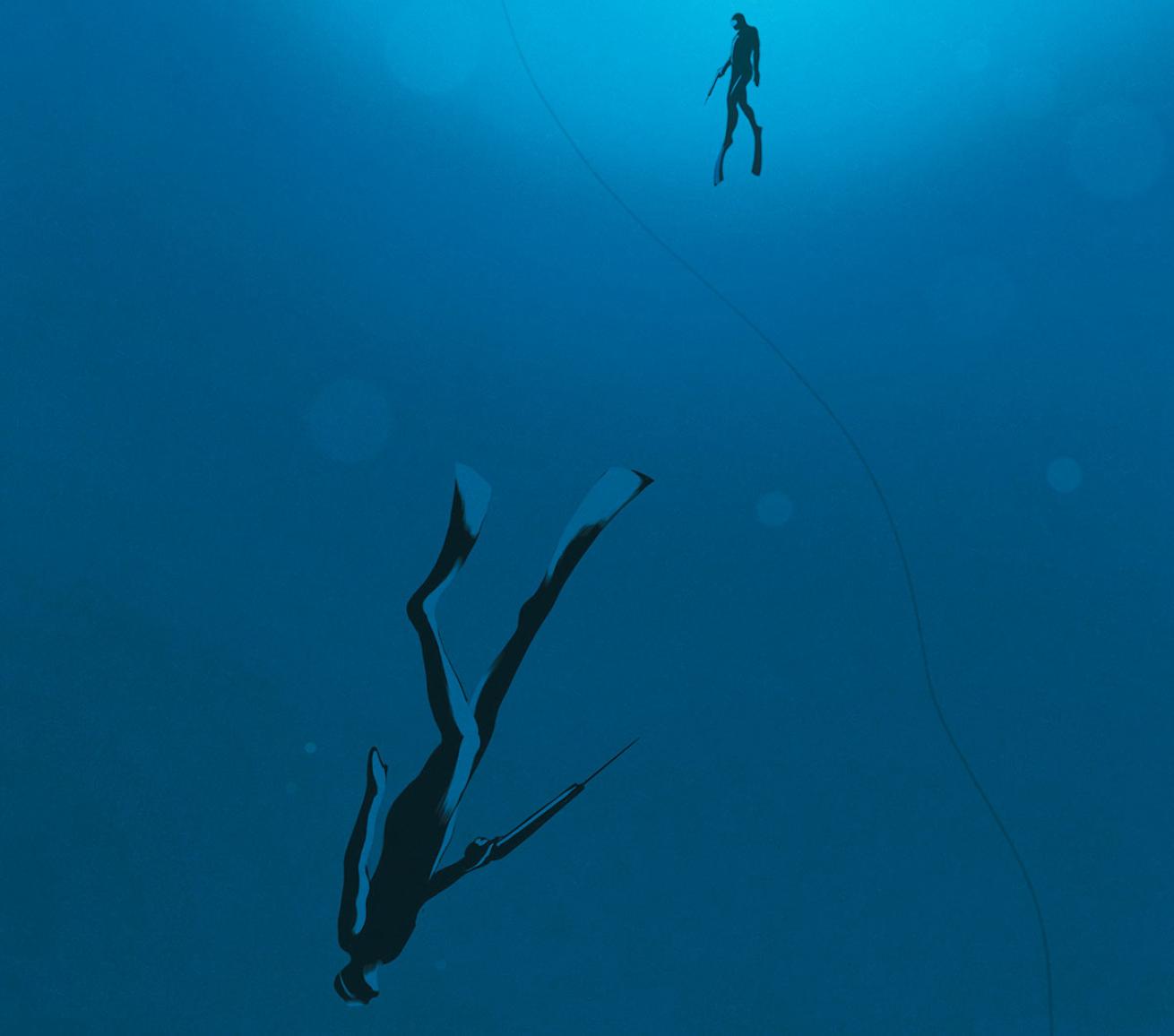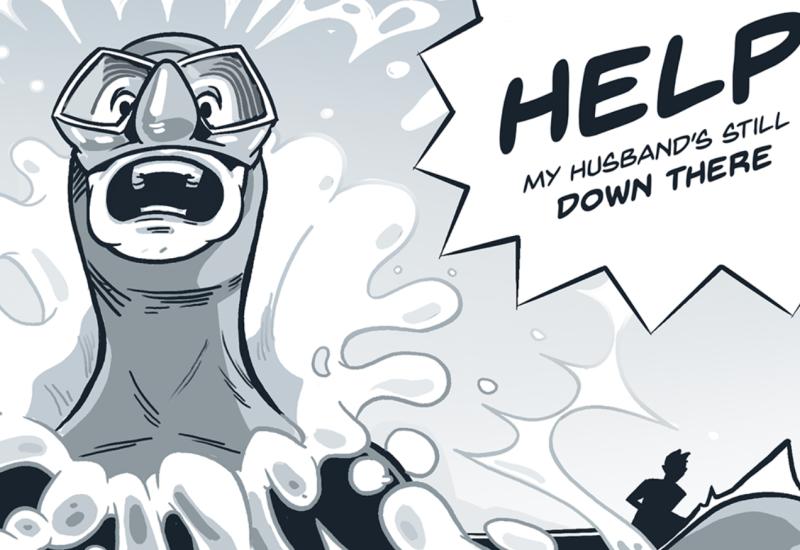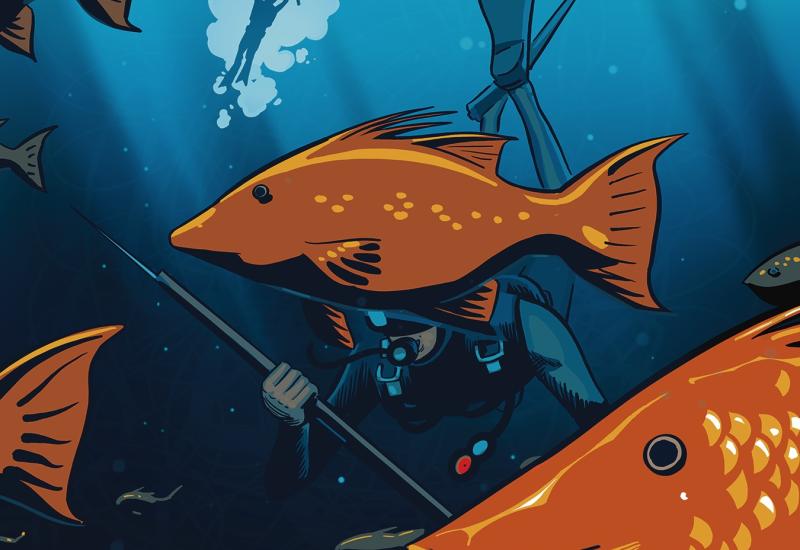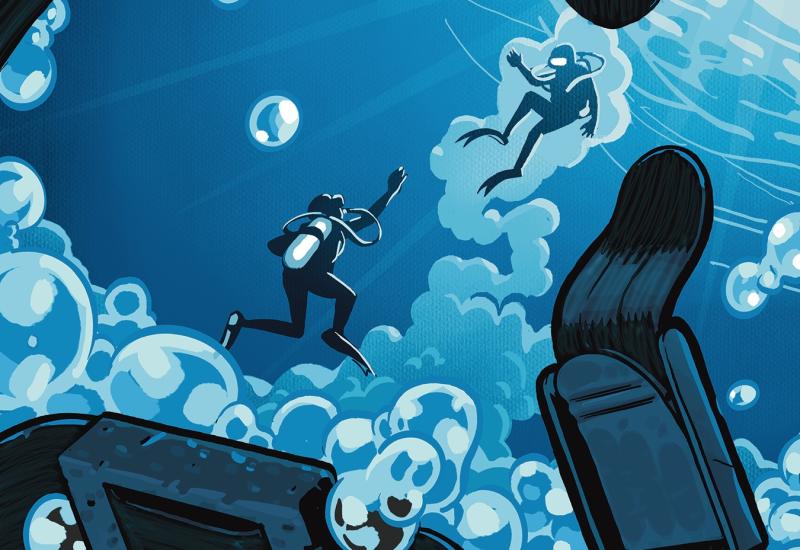Solo Freedive Leads to Disaster

Carlo GiambarresiFreediving safety lessons from a diver who neglected basic rules of freediving and was put in a tragic situation.
Casey loved the feeling freediving gave him. He was a scuba diver, but being unencumbered by equipment in the silence of the water was even more magical. He enjoyed spearfishing too, and felt it was the perfect combination. He was the quiet hunter, stalking his prey.
Seeing a big fish to his right, Casey swam a little deeper to get into position to make the kill.
The diver
Casey was a fit 29-year-old who was in the water at least weekly, more often when his schedule permitted. He was certified as a scuba diver but had taken up freediving two years before. He loved the thrill of spearfishing while freediving and was known to be good at it. He often invited friends over to help him eat his most recent catch.
The dive
Conditions were great as Casey and three of his buddies dropped anchor from a private boat at their favorite spearfishing location. The area had a lot of structure and was known to attract big game fish. The four divers entered the water and spread out, to stay out of each other’s way. As they split up, they made bets about who would get the biggest catch and who was “buying” when they got back to shore.
Each diver followed his own routine, but they all began with a freedive to check out their surroundings and see what game fish might be close by. That was the last time they were all in the same place at the same time. From there, one or two would be on the surface while the others were underwater. After the first dive, the four men spread out farther. They stayed within 50 yards of the boat to make it easy to bring back their prey, but they drifted out in a circle.
The accident
As the morning wore on, Casey’s buddies returned to the boat with their catches. It wasn’t until three of them were back at the boat at the same time that they realized they hadn’t seen Casey in a while. He wasn’t on board, and there was no sign of him in the water either. After waiting for a few minutes and searching on their own, they called for help. A few hours later, Casey’s body was recovered on the ocean bottom at 120 feet. He had drowned.
Analysis
To understand this accident, you have to understand a bit of basic physics and the physiology of freediving. By definition, a freediver descends on a single breath of air. That breath is made up of 21 percent oxygen.
As the freediver descends, the oxygen molecules in that breath are compressed, making the body think it has access to higher concentrations of oxygen. This is expressed as oxygen partial pressure as determined by Dalton’s Law, something most divers learn about in their open-water classes. Divers familiar with diving on enriched air/nitrox will also recognize this concept.
During the dive, the freediver uses some of that oxygen while at depth. On ascent, the pressure drops, and the oxygen partial pressure returns to normal. Since the freediver metabolized part of the available oxygen while swimming, the oxygen partial pressure falls below 21 percent. This condition is called hypoxia.
The human body can function in an atmosphere with lower concentrations of oxygen for short periods. While there is some variability in how low oxygen partial pressure can go and a diver remain conscious, no diver can know if he or she has gone too far until it is too late.
As the freediver descends, the oxygen molecules in that breath are compressed, making the body think it has access to higher concentrations of oxygen.
Because the greatest change in ambient pressure is in the first 33 feet/1 atmosphere of seawater, that is also the range where the oxygen concentration in the blood drops the quickest. If the oxygen partial pressure drops off too quickly or too far, the freediver loses consciousness. This is known as a shallow-water blackout because it often happens in the last 10 to 15 feet before the surface.
For years, freedivers were taught to hyperventilate three or four quick breaths before making a dive. This was thought to “pack” more oxygen in the lungs. In reality, it lowers the level of carbon dioxide (CO2) in the bloodstream. Your body’s urge to breathe is not signaled by a lack of oxygen, but rather by a build up of CO2. By reducing the level of CO2 in the bloodstream, the diver could stay down longer or go deeper. This led to freedivers pushing their limits and blacking out.
In the event of shallow-water blackout, without immediate assistance from another diver in the water, a freediver can quickly drown. In Casey’s case, his buddies were off on their own, and no one was watching out for anyone else. No one saw Casey disappear. He likely blacked out near the surface and then sank to the bottom.
Freediving is growing in popularity, and there are many training programs available to teach freedivers to participate in the sport correctly. Freediving is not snorkeling with an occasional swim down 15 or 20 feet to examine the coral below. Freediving is about the practice of diving deeper and staying longer to explore, take photos or spearfish without scuba equipment. Many freedivers swim down to 60 feet (and often much deeper) for two or three minutes at a time. Competitive freedivers can make dives to hundreds of feet for more than four minutes on a dive.
To do this safely, freedivers need to practice the buddy system, just like scuba divers. Since shallow-water blackout happens near the surface, the safest procedure is for freedivers to take the “one up, one down” approach.
Diving as a buddy team, one diver remains on the surface while the other makes the dive. The surface diver watches for the buddy to return, monitoring their progress, especially in the final 15 feet or so.
Only after the first diver has returned to the surface and taken a few breaths to demonstrate that he or she is OK will the second diver begin a dive. That way, there is always one freediver on the surface, ready to perform a rescue if the other freediver gets in trouble on ascent.
Many freedivers do not wear flotation vests, but there are a number of automatic freediver recovery vests now on the market that sense when a diver is ascending and then begins descending again, as if they have lost consciousness. When that happens, the vest deploys on its own, inflating and bringing the unconscious freediver to the surface in a face-up position.
Had Casey and his friends followed the “one up, one down” method or invested in freediver recovery vests, Casey might be alive today.
Lessons for life
- Seek training in freediving. There’s more to it than simply grabbing your mask, snorkel and fins.
- Use basic safety precautions. It’s easy to grow overconfident, but physics and physiology don’t care how confident you are.
- Work as a buddy team. One up, one down. The diver on the surface uses the interval to catch his breath and recover while the other diver explores.
- Don’t push your limits. While it might be fun to go for a personal depth record or to see how long you can stay submerged, it can be dangerous.
- Do not hyperventilate. It might help you stay down longer, but it makes it more likely that you won’t make it back to the surface.










